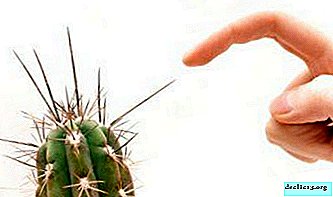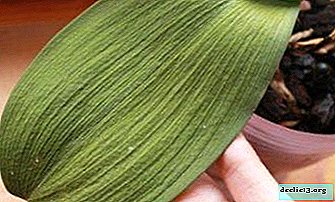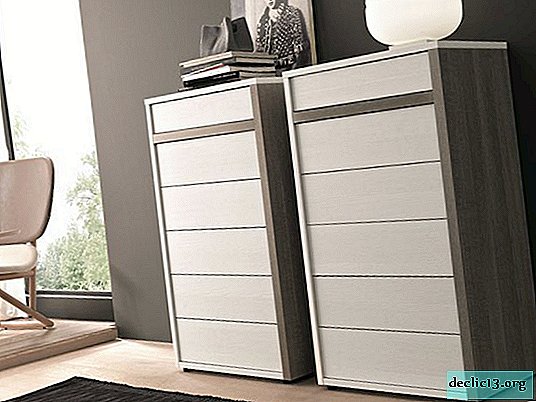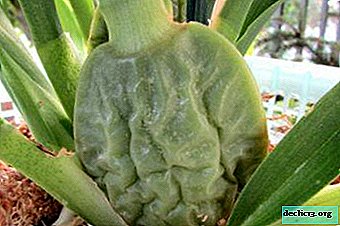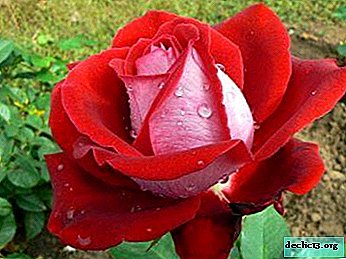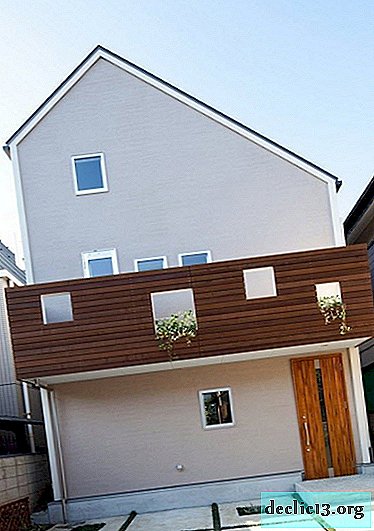The solution to the problem is an orchid without a growth point. What to do with the various causes of this ailment and what care is needed?
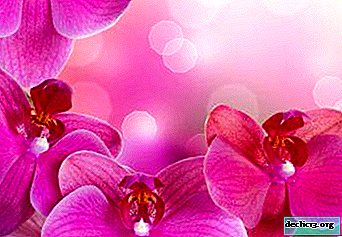
Many flower owners do not always understand the structural features of the plant. So orchids die, because of the ignorance of the grower.
Indeed, most of the problems can be solved by changing the parameters of the content, or in time to provide assistance in resuscitation of a flower.
So, from the article you will learn what a growth point is and why it is needed, as well as the reasons for its absence. See her photo, see how to care for her and the plant itself.
What is it?
The growth point or core of the plant is the topmost leaf. Monopodial orchids have one growth point. Such plants develop from the top of the shoot. Leaves from the upper part grow alternately, buds are laid between them. From which peduncles or axillary roots are formed.
Reference! Monopodial type orchids include Phalaenopsis and Wanda.What is her role?
 In the absence of a growth point, the plant cannot fully develop in the future. That is, the leaves do not grow, new shoots, peduncles do not appear. No growth.
In the absence of a growth point, the plant cannot fully develop in the future. That is, the leaves do not grow, new shoots, peduncles do not appear. No growth.
Means the function of the growth point is to plant new shoots and lengthen the stem. Without this part, the plant gradually begins to die, it has only one rosette, the lower leaves and the root system (what kind of roots a healthy orchid should have and what problems arise with this particular part of the flower can be found here). Of course, 100% cannot be said that the orchid will die. There are ways to help a flower without leaves, provoke the growth of lateral children.
Signs of absence and reasons
Beginners do not immediately understand when an orchid has a damaged growth point. Erroneously accepting damage to the leaf that goes behind the core (about what changes in the leaves you need to pay attention to when caring for the orchid, read here). If after the removal of this leaf, an embryo of a new one appeared or there is a young shoot, then it is not worth worrying about the growth point - it is alive. However, severe damage to the growth point occurs as a result of the following reasons.
Sunburn
Direct rays of the sun with direct contact cause burns on the leaves, stem, flowers. A plant that is not used to intense light does not tolerate this well.. Close proximity to the glass in summer or not shaded lighting leads to burning of the upper delicate leaves.
Mechanical damage
The absence of the top of the orchid may result from a fall of the pot or other injury to part of the plant. The damaged stem was not treated with an antiseptic in time, and as a result, the appearance of wounds on the stem.
Excess moisture
Due to the failure to observe the correct irrigation regime, many ailments arise. Especially often the decay of the growth point occurs. During irrigation, water remains in the axils of the leaves, and with insufficient lighting, low temperature and high humidity, it remains for a long time. This inevitably leads to decay, and this process leads to the loss of a growth point.
Fungal and bacterial infections
Violation of the microclimate in the room leads to the development of infectious diseases. Still similar is possible if the quarantine regime is not respected. If fungal and bacterial infections are detected, the diseased flower should be urgently isolated from healthy ones, because the infection spreads very quickly.
Phalaenopsis Cylinder
A similar phenomenon is observed when a peduncle grows from the core of an orchid (see how to care for the arrow of an orchid here). It happens quite rarely, but it does happen. Recently, flower growers have noticed cylindering among Dutch orchids.
Photo
Below you can see photos of the growth point of the orchid:



What to do if it is not?
If the core is badly wounded, the orchid stops growing up. Many believe that a plant cannot survive without a growth point. It can, but the probability is not in all cases. Without an active core, the exot is exposed to fungal diseases. If he has the strength to overcome the disease, the plant will survive. The flower can give a lateral process on the stem or peduncle, thus continuing to grow.
Important! If the unexpected happened, the orchid’s trunk began to die, its natural state changed, definitely, there were any problems.Conduct a thorough visual examination of the diseased plant:
- Find out what is causing this condition.
- Change the living conditions of the orchid. Remove the plant from a sunny place or shade the light with a curtain. Better to place in partial shade.
- Control the quality and frequency of irrigation. Water should not remain in the axils of the leaves.
If the cause of the lesion is an infection or a process of decay has occurred, then follow these instructions.
- Prepare cropping tools. It is better to choose a garden pruner or a sharp knife.
- Disinfect them. You can pour tools over with boiling water or wipe with an alcohol solution.
- Remove any damaged area to a green cloth.
 With the process running, remove the entire core, to prevent the spread of infection throughout the flower.
With the process running, remove the entire core, to prevent the spread of infection throughout the flower.- Treat slices with ground cinnamon or crushed activated carbon. Zelenka or iodine can also be used.
- After cutting, allow to dry a little.
- Treat the soil and the plant with a 0.2% solution of the drug Fundazole or Topsin.
- We pour the drug directly into the wound, into the open outlet of the plant.
- We carry out the procedure at least three times with an interval of 14 days.
- Inspect the diseased flower regularly for signs of rotting.
- If the infection process occurs again, repeat the procedure.
Caring for her and the plant itself
After a successful amputation, a room exot will have a couple of lower leaves and stumps. Further, this rosette will not be able to grow, but the plant has not yet been lost. Orchid can recover in two ways.:
- from sleeping buds on a peduncle;
- from sleeping root buds.
In detail about how to wake the sleeping buds of an orchid, we talked about in this article.
Under favorable conditions, new sprouts will certainly appear. But also their growth can be stimulated artificially. On the peduncle, the kidneys are visually visible, although they are covered with scales. With stem, the situation is more complicated. The bud is located under the leaves, in the sinuses or deep in the roots. You should look for them in places where there were leaves, but they have dried up from old age. Green, living basal buds can also be used to get kids. It is necessary to carefully apply a hormonal cytokinin paste on them and wait for the result.
Advice! If necessary, repeat the application of cytokinin paste 2-3 times.Be sure to follow these guidelines for the first time after amputation.
- Remove from the south window sill or dim the light with a tulle curtain. In autumn and winter, provide artificial lighting. The daylight hours should be 10-12 hours. It is better to choose a place with diffused lighting.
 Maintaining temperature + 16-18ºС. Do not put under air conditioners, and do not leave in a draft, plant hypothermia is possible. In winter, do not place near heating radiators.
Maintaining temperature + 16-18ºС. Do not put under air conditioners, and do not leave in a draft, plant hypothermia is possible. In winter, do not place near heating radiators.- Humidity within 50-60%.
- Regularly ventilate the room.
- Moisten the flower 1 time in 7-10 days, in between the soil should completely dry.
- Carefully ensure that moisture does not remain on the leaves. After watering, after 30 minutes, remove stagnant water in the axils of the leaves.
- After a couple of months, you can begin to apply complex mineral fertilizers.
Even when the growth point has completely died, the plant can be reanimated, observing all the specified rules. And the key to active growth, bright flowering - these are favorable conditions for bearing and plant hygiene. Also do not forget to regularly inspect room exot. Indeed, with the recognition of infectious diseases in the early stages, it will not reach severe consequences.

 With the process running, remove the entire core, to prevent the spread of infection throughout the flower.
With the process running, remove the entire core, to prevent the spread of infection throughout the flower. Maintaining temperature + 16-18ºС. Do not put under air conditioners, and do not leave in a draft, plant hypothermia is possible. In winter, do not place near heating radiators.
Maintaining temperature + 16-18ºС. Do not put under air conditioners, and do not leave in a draft, plant hypothermia is possible. In winter, do not place near heating radiators.

